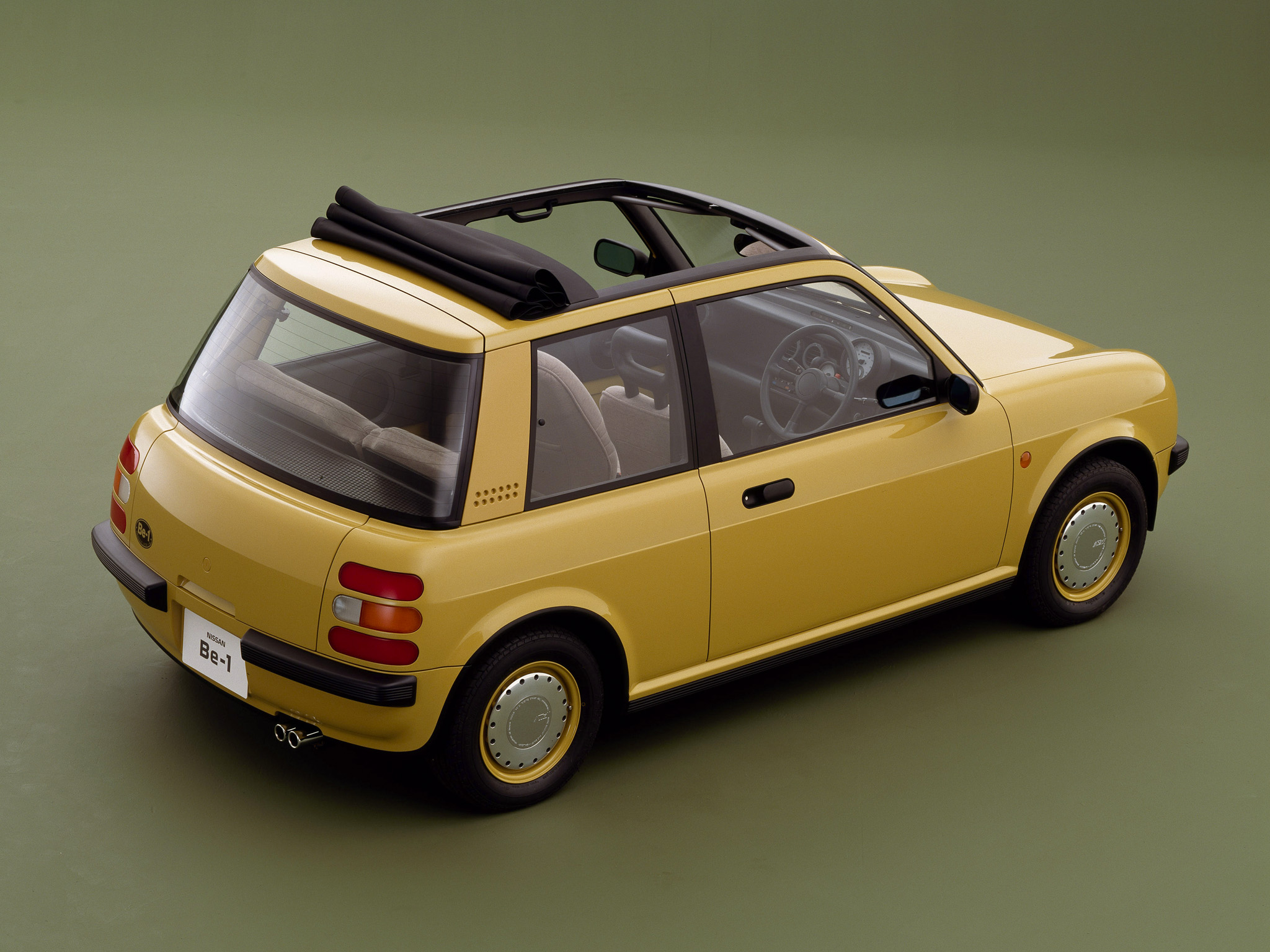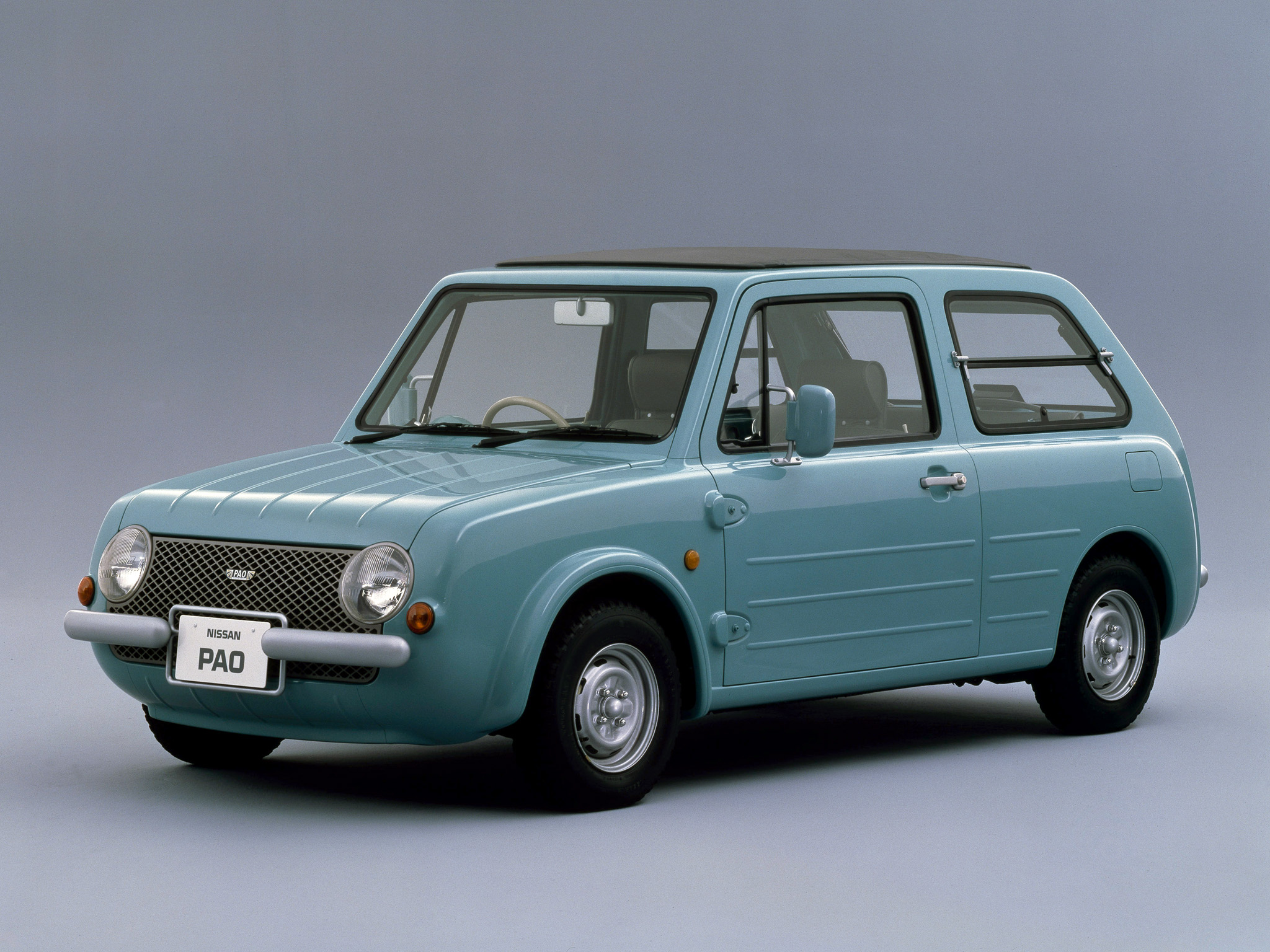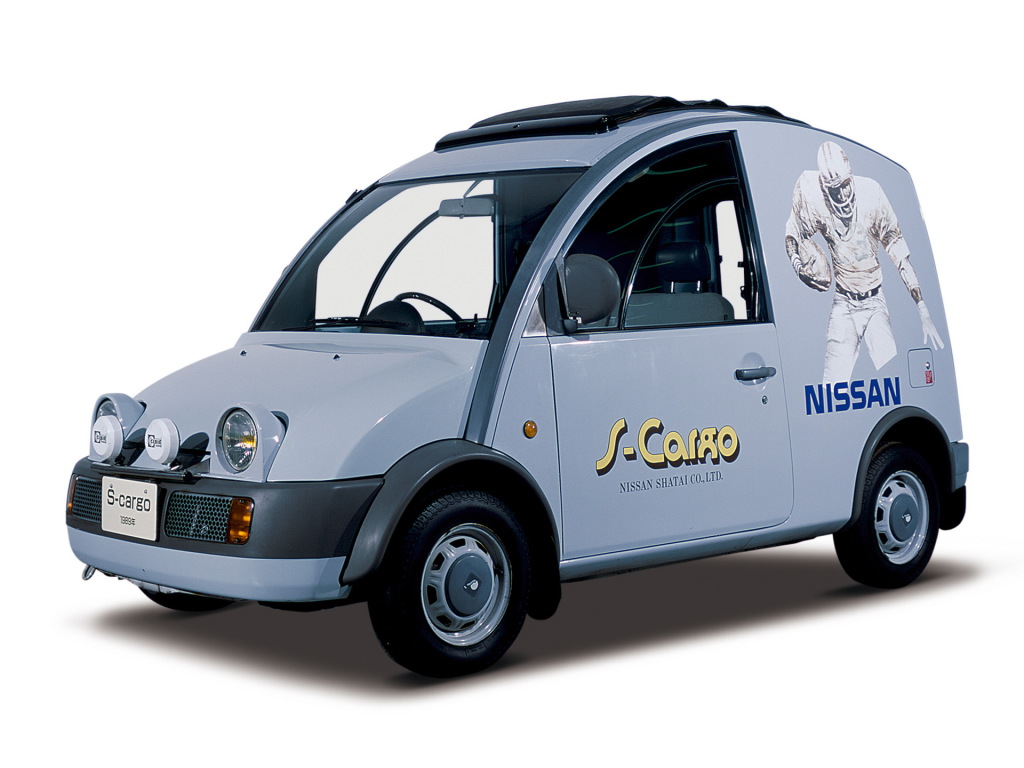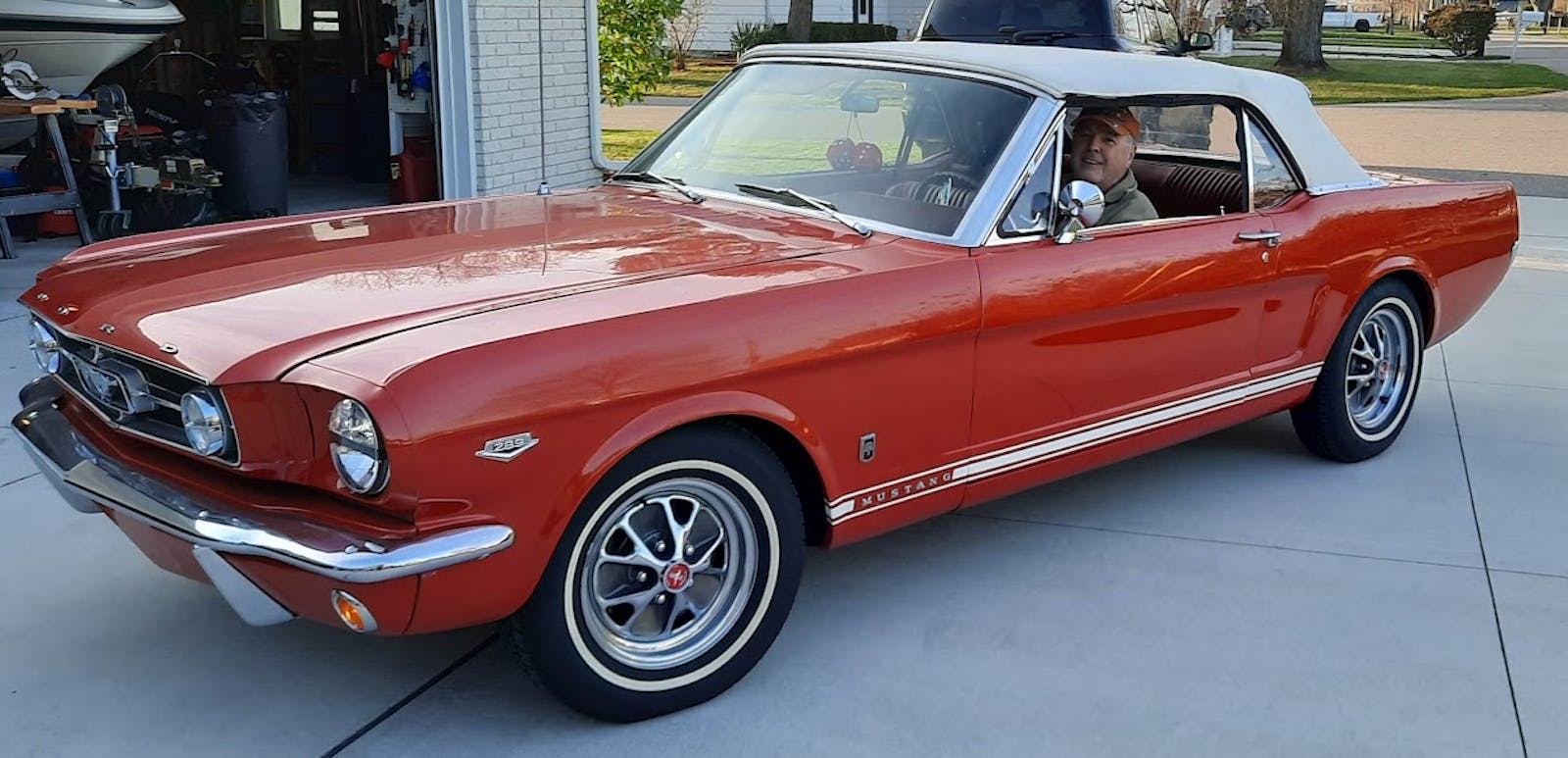Nissan’s 4 Pike microcars are tiny Nintendo-like ’80s delights
Back in the 1980s, long before automakers went back to the future with new Beetles and Minis and Thunderbirds, Nissan did the retro thing with four adorable little cars that looked like something you’d find in a video game. These Pike cars came in bright colors like pumpkin orange and offered whimsical features like a sushi tray, and Japan went absolutely nuts for them. No, really. So many people wanted them that Nissan held lotteries.
Nissan made no more than 50,000 examples of these limited-run rebodies, and they have to be the cheapest limited-edition collector cars you can own today, provided you can find one and navigate the regulatory maze of bringing it back to the U.S.
In building the Pike cars, Nissan took its bread-and-butter Micra/March (a car as ubiquitous as it was boring) and turned it into something fun. Embracing the design ethos of gadgets like the Nintendo Gameboy probably seemed crazy at the time, but people loved Naoki Sakai’s retro-futuristic combination of modern design, toylike simplicity, and bright colors. New York Times design critic Phil Patton called them “the height of post-modernism.”



Nissan introduced the idea with three concepts at the 1987 Tokyo auto show. They were such a hit that the company decided to build at least one or two of the boutique cars. Meant to be hip little city cars that made a statement during a time when Nissan was producing mostly boring rolling appliances.
Sakai designed four cars. The Be-1 looked a bit like a startled Mini with its almost comically oversized headlamps. The Pao drew inspiration from the Mini and the Citroen 2CV, and featured exposed door hinges, flip-up side windows, and a split rear tailgate. The most endearing had to be the S-Cargo, a tiny little delivery van that resembled a snail (Escargot … get it?) and had the bug-eyed face of an Austin-Healy Sprite. The Figaro looks like a lean, updated Autobianchi Bianchina from the late-1950s.
All of them were based on Micra/March platform, with a 90-inch wheelbase, rack-and-pinion steering, front disc brakes, and a three-speed automatic or five-speed manual. A tiny 987-cc engine powered the three cars, while the S-Cargo got a 1.5-liter engine. Nissan built them at its Pike factory, hence the name “Pike cars,” and offered them only in Japan through its Nissan Cherry Stores. The cars were devoid of Nissan branding, and even the marketing material made scant mention of Nissan.
The Be-1 popped out of the chute first in 1987 at the Tokyo Auto Show, becoming available in 1988. The five-passenger hatchback was an immediate hit, and Nissan had to hold a lottery to determine who would get one of the 10,000 cars slated for production. The car’s immediate success prompted Nissan to greenlight the S-Cargo, which, among other things, featured a removable sushi tray. It also received the larger 1.5-liter engine. Production started in 1989 and depending upon who’s telling the tale Nissan built between 8,000 and 12,000 in two years.

The S-Cargo appeared alongside the Pao, the most popular of the Pike cars. The name is said to be Chinese for “Mongolian portable dwelling.” No, we did not make this up. The entire production run of about 51,000 cars sold out in just three months and a Pao could only be ordered in those three months through a reservation process. Some customers had to wait until 1991 to finally receive the Pao they ordered in 1989.
The Figaro appeared in 1991. The two-seater, designed by Shoji Takahashi, looks like a convertible, but the roof is fixed. A canvas center section retracts. Bakelite knobs and chrome-trimmed gauges bring the retro vibe into the cabin. Nissan planned to build just 8,000 but bumped that to 20,000 to meet demand–and even then, had to assign cars to buyers by lottery.
With fewer than 100,000 Pike cars built, finding one won’t be easy. It doesn’t help that Nissan never officially exported them (although many have made their way to Britain). On the plus side, new laws governing the importation of cars that don’t meet federal EPA and safety regulations exempt “classic cars” at least 25 years old. Importers specializing in these adorable cartoon cars make the process a breeze if you don’t want to go to the hassle of tracking down a car, filling out the customs paperwork, and paying fees and bonds before shipping it home.


Ready to step up? Prices from private parties range from a bit under $10,000 to almost $20,000 for a lightly used Figaro with 50,000-80,000 miles. Clean examples of a Pao are in the $8000-$16,000 range, with S-Cargo deliveries in that same range. Rusty examples can be purchased for much less, but as with any car exhibiting rust, buyer beware.
Prices seem to be holding steady over the last two-three years. There are few daily driver cars you can drive for 15,000 miles a year that maintain value, so while collectors would like to see their cars appreciate think of these as drivable collector cars that beat buying a new Honda or Toyota. Also, there are dealers specializing in Japanese Domestic Market (JDM) cars now that desirable models like Nissan Skylines various Type R Hondas are legal to import.
Before going to all the trouble, though, remember, these are tiny little city cars with tiny little engines. And the steering wheel is on the right. Left-hand conversions are expensive, and converted Pikes are the unicorns of collector cars. Even if you find one, you’ll pay a hefty premium for it.
In this age of characterless, appliance-like electric and hybrid pods, Nissan’s quartet of Pike cars are full of personality.


















